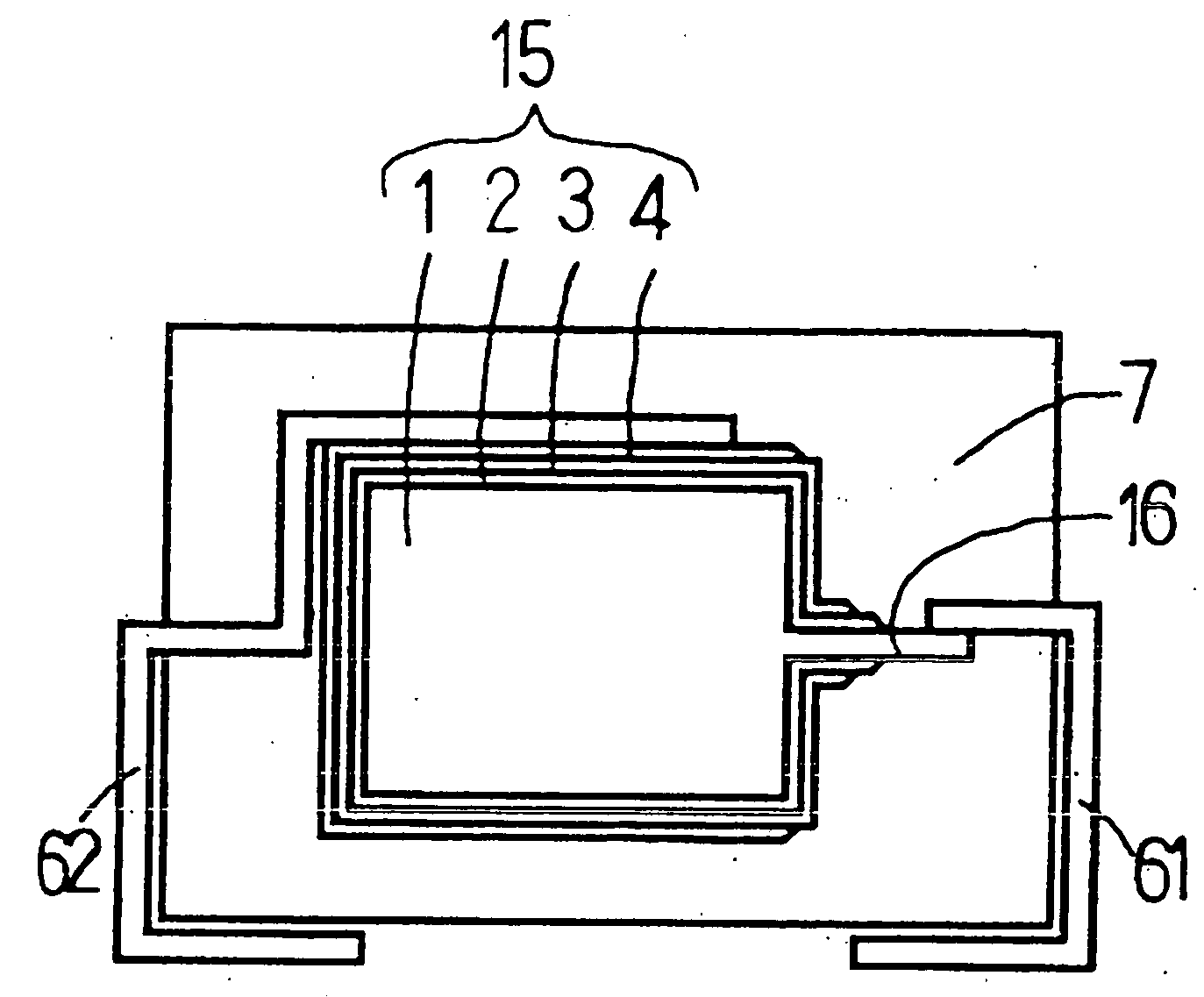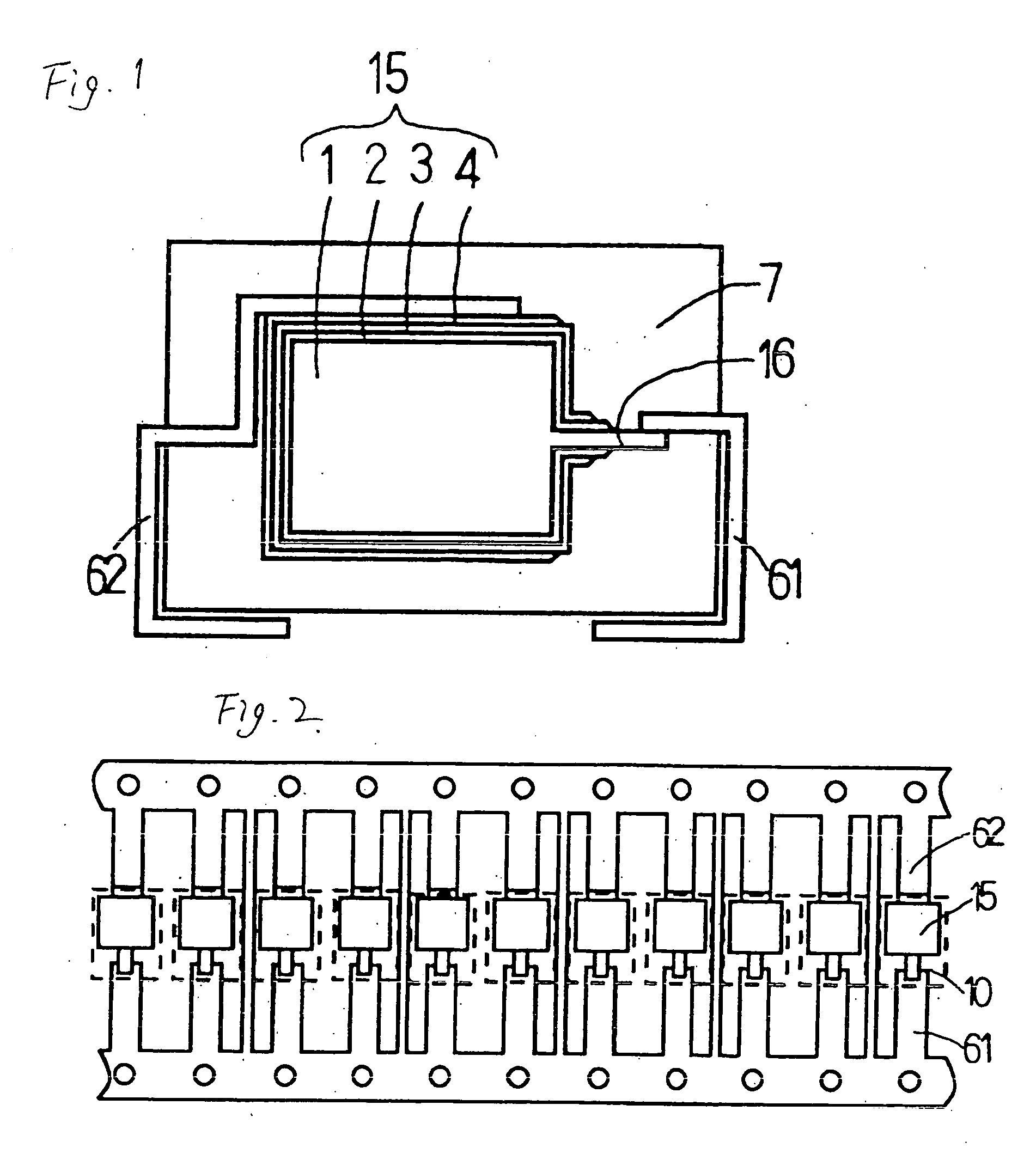Niobium solid electrolytic capacitor
a solid electrolytic capacitor and niobium technology, applied in the direction of liquid electrolytic capacitors, electrolytic capacitors, electrolytic capacitors, etc., can solve the problems of inability to solve problems, inability to niobium solid electrolytic capacitors, and large problems in the forming (hereinafter, referred to as molding) step, so as to prevent the degradation of niobium at injection molding, good capacitor properties, good capacitor properties
- Summary
- Abstract
- Description
- Claims
- Application Information
AI Technical Summary
Benefits of technology
Problems solved by technology
Method used
Image
Examples
example 1
[0019] A capacitor element was formed by chemically converting an element prepared by sintering 60 mg of niobium powder having a CV product of 97000 μFV / g with an implantation niobium wire in an aqueous nitric acid solution at 45 V and then forming a solid state electrolyte layer constituted of polypyrrole and a cathode lead-out layer constituted of a carbon layer and silver paste layer in order, which was subjected to naked pre-aging at 125° C. and 10 V for 1.5 hours. Subsequently, the capacitor element was attached with an anode terminal and cathode terminal by a well-known way. The resultant was set in accordance with a cavity of an injection mold heated at 150° C. The injection mold was injected with a liquid silicone resin having a viscosity of 51000 poise (hereinafter, represented as P) and post solidification hardness of 71 Hs over 5 seconds with 10 atm, which was held for 20 sec to cure to form a sheath resin. Thus, a niobium solid electrolytic capacitor of 100 μF / 10V was pr...
example 2
[0020] A niobium solid electrolytic capacitor was prepared by the same way as in Example 1, except for setting a capacitor element in an injection mold heated at 120° C., injecting a flame-resistant liquid silicone resin having a viscosity of 7000 P and a post solidification hardness of 55 Hs over 5 seconds with 10 atm to be held for 100 seconds to cure, at aforementioned injection molding.
example 3
[0021] A niobium solid electrolytic capacitor was prepared by the same way as in Example 1, except for attaching the capacitor element with an anode terminal and cathode terminal followed by dipping in polyimide silicone SMP-2001 (made by Shin-Etsu Chemical) to form an undercoating on the surface of the capacitor element, then, conducting a primer treatment to the capacitor element, anode terminal and cathode terminal, and then injecting a liquid silicone resin having a viscosity of 6100 P and post solidification hardness of 79 Hs.
PUM
| Property | Measurement | Unit |
|---|---|---|
| Hardness | aaaaa | aaaaa |
Abstract
Description
Claims
Application Information
 Login to View More
Login to View More - R&D
- Intellectual Property
- Life Sciences
- Materials
- Tech Scout
- Unparalleled Data Quality
- Higher Quality Content
- 60% Fewer Hallucinations
Browse by: Latest US Patents, China's latest patents, Technical Efficacy Thesaurus, Application Domain, Technology Topic, Popular Technical Reports.
© 2025 PatSnap. All rights reserved.Legal|Privacy policy|Modern Slavery Act Transparency Statement|Sitemap|About US| Contact US: help@patsnap.com



